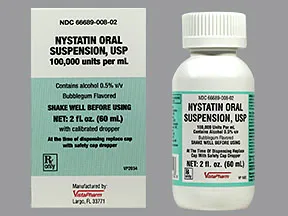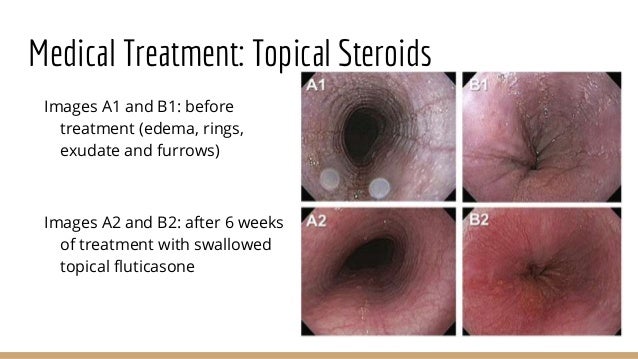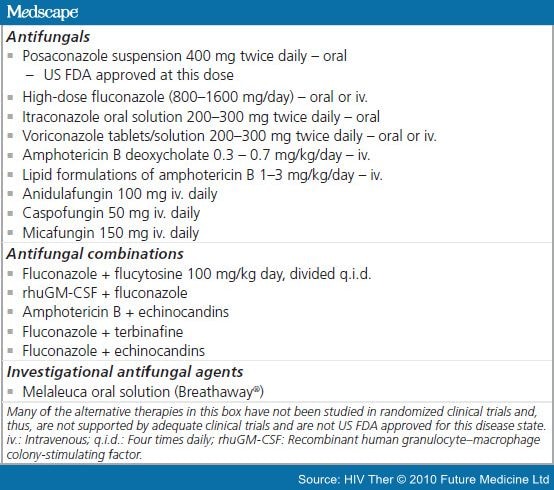

The effect of nystatin was similar to that of placebo on fungal colonisation the total number of colonisations on nystatin was 53 out of 164 patients while it was 57 out of 147 on placebo (relative risk (RR) 0.85, 95% confidence interval (CI) 0.65 to 1.13).
#CANCER NYSTATIN SWISH ESOPHAGEAL THRUSH TRIAL#
One trial reported five cases of sepsis on nystatin and two on placebo but the definition of sepsis included positive cultures from at least three sites ( Savino 1994). None of the three placebo‐controlled trials reported on deaths or on invasive fungal infection according to our criteria. We have previously drawn attention to this curious discrepancy but it has not been explained ( Johansen 1999).įor the 20 updates no additional trials were identified for inclusion. Although one of the trials was described as a two‐armed study ( Groll 1997), 18 of the patients were also included in a report of a three‐armed study ( Ninane 1994). Length of follow‐up was stated in only three trials ( Ellis 1994 Lumbreras 1996 Powles 1999).


In three trials the participants were children ( Feusner 1994 Flynn 1995 Groll 1997). The daily dose of nystatin in adults varied from 0.8 MIE to 72 MIE daily, and was 2 mg/kg/d in a liposomal formulation. Nystatin was compared with placebo or no treatment in 3 trials, with fluconazole in 10, and with amphotericin B in one all drugs were given orally apart from the amphotericin B trial ( Powles 1999). Acute leukaemia was the most common disease in eight trials two trials concerned exclusively ( Feusner 1994) or mainly ( Flynn 1995) patients with cancer, one mainly patients receiving a bone marrow transplant ( Powles 1999), one patients receiving a liver transplant ( Lumbreras 1996), one critically ill surgical and trauma patients ( Savino 1994), and one AIDS patients ( Pons 1997). The drugs were given prophylactically in 12 trials and as treatment in 2 ( Flynn 1995 Pons 1997). Of the 14 included trials 3 were published as abstracts only ( Feusner 1994 Powles 1999 Tian 1997). A trial in which only 12 patients received nystatin failed due to serious problems with compliance ( Hoppe 1995) another reported only the number of 'Candida‐free' days (which was 18 on both nystatin and on placebo) ( Williams 1977) the third report was a duplicate publication ( Ellis 1994) and in the fourth trial, which compared nystatin with amphotericin B ( Epstein 2004), all 40 patients received systemic fluconazole 200 mg/d, which is an effective treatment. We identified 18 potentially relevant reports. For the 20 updates no additional trials were identified for inclusion. The results were very similar if the three studies that were not performed in cancer patients were excluded. There were no proven fungal infections in a small trial that compared amphotericin B with liposomal nystatin. There was no statistically significant difference between fluconazole and nystatin on mortality (RR 0.75, 95% CI 0.54 to 1.03) whereas fluconazole was more effective in preventing invasive fungal infection (RR 0.40, 95% CI 0.17 to 0.93) and colonisation (RR 0.50, 95% CI 0.36 to 0.68). The effect of nystatin was similar to that of placebo on fungal colonisation (relative risk (RR) 0.85, 95% confidence interval (CI) 0.65 to 1.13). Nystatin was compared with placebo in three trials, with fluconazole in 10, and amphotericin B in one the dose varied from 0.8 MIE to 72 MIE daily and was 2 mg/kg/d in a liposomal formulation. Eleven trials were in acute leukaemia, solid cancer, or bone marrow recipients one in liver transplant patients one in critically ill surgical and trauma patients and one in AIDS patients. The drugs were given prophylactically in 12 trials and as treatment in two.


 0 kommentar(er)
0 kommentar(er)
